On Monday, April 29, NATO Secretary General Jens Stoltenberg made a surprise visit to Kyiv. ANDRIY MARTYNOV, doctor of historical sciences, professor, leading researcher of the Department of History of International Relations and Foreign Policy of Ukraine at the Institute of History of Ukraine of the National Academy of Sciences of Ukraine provided exclusive analysis to Apostrophe on what this visit signifies and the future prospects for Ukraine's relationship with the Alliance.
Substantive conversation
As we recall, another Ramstein meeting took place on April 26, marking the second anniversary of this cooperation format between Ukraine and NATO. It's important to note that the Ramstein format extends beyond NATO, involving nearly 50 countries globally. Additionally, preparations are underway for the upcoming jubilee summit of the North Atlantic Alliance in Washington this July, which will commemorate NATO's 75th anniversary.
Accordingly, the Alliance is gearing up to explore compromises with Ukraine on expanding cooperation, including in the political domain, yet without an official NATO invitation. This is because, currently, key members like the USA and the Republic of Germany are not prepared to formally invite Ukraine into the Alliance. However, this does not imply that NATO is withholding cooperation from Ukraine.
On the contrary, amidst the current tensions in Europe, the North Atlantic Alliance is actively expanding its cooperation with Ukraine. In particular, Jens Stoltenberg, who is likely to step down as NATO Secretary General in July, has been instrumental in this effort. Various candidates are being considered to succeed him, but his significant contributions to enhancing Ukraine's defense capabilities are undeniable.
Stoltenberg is currently focused on strengthening NATO's European flank and enhancing the contributions of European Union countries that are NATO members to collective security and defense. Moreover, he is working to ensure that the aid provided to Ukraine by the United States is bolstered by additional support from the European Union.
Consequently, the discussions with Stoltenberg in Kyiv are substantial, focusing on the critical types of weapons that enable Ukraine to maintain its defensive front.
Stoltenberg as a mediator
It's worth to remember that Stoltenberg was asked to remain in his position as early as 2022, even though he was planning to step down, because the member states could not agree on a consensus candidate for the new Secretary General at that time.
Stoltenberg is serving in his role during the third year of the large-scale Russian-Ukrainian war and is performing his duties at a high level. While the assistance provided is not officially under the banner of NATO, it primarily involves bilateral aid agreements, such as Ukrainian-German, Ukrainian-Polish, Ukrainian-French, or Ukrainian-British collaborations.
While NATO does not directly provide assistance under its flag, it's evident that the coordination exists because each country offering bilateral aid to Ukraine is a member of NATO. Thus, the NATO Secretary General effectively serves as a mediator in these arrangements.
New fund
During his visit to Kyiv, NATO Secretary General Jens Stoltenberg initiated the creation of a Fund for the financial support of Ukrainian defense, totaling 100 billion euros.
This proposal was made several months ago, at a time when the United States was debating its aid provision to Ukraine.
It's important to note that this initiative also involves the Baltic states. Lithuania, Latvia, and Estonia proposed that each NATO member country should allocate 1% of their military spending to Ukraine. While military expenditures are rising, not all NATO countries have yet agreed to this measure.
It is anticipated that during the NATO summit in Washington this July, there may be discussions concerning the financial contributions to the defense fund for Ukraine. This will coincide with the expected formal decision requiring NATO member countries to increase their military expenditures to at least 2% of their gross domestic product. This initiative is gradually gaining traction as countries commit to it, although the funds are not yet physically available.






